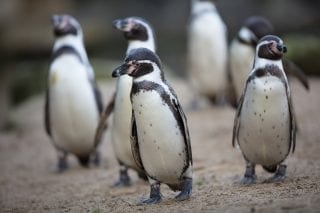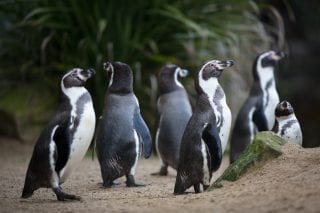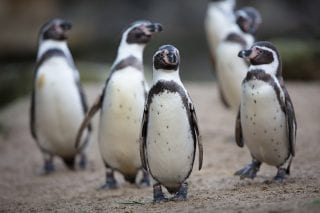Fun Facts
Blushing penguins!
Humboldt penguins have patches of bare skin on their faces (around their beaks). When the penguins get too hot they blush, which helps them to cool down.
Grasping Prey
Humboldt penguins have tongues with small barbs (thorn like structures) pointing backwards, which help to grasp prey and prevent it from slipping away.
Camouflage
A penguin's black and white feathers are for self-protection in the sea.
The black feathers on their backs help camouflage them into the ocean (from predators looking down at them).
The white feathers on their bellies help camouflage them into the light-coloured surface of the water (from predators below them). This type of camouflage is also known as countershading.
Salt Water
Penguins can drink salt water because they have special glands in their nose that excrete (filter out) salt.
Moulting
Sometimes penguin’s feathers can look different to what we expect. This is usually because they are moulting – they are shedding old feathers to make way for new feathers.
Over time penguins feathers become worn and need to be replaced with new ones. Unlike most birds which lose a few feathers at a time, penguins have a catastrophic moult which means moulting (shedding) all their feathers at once.



